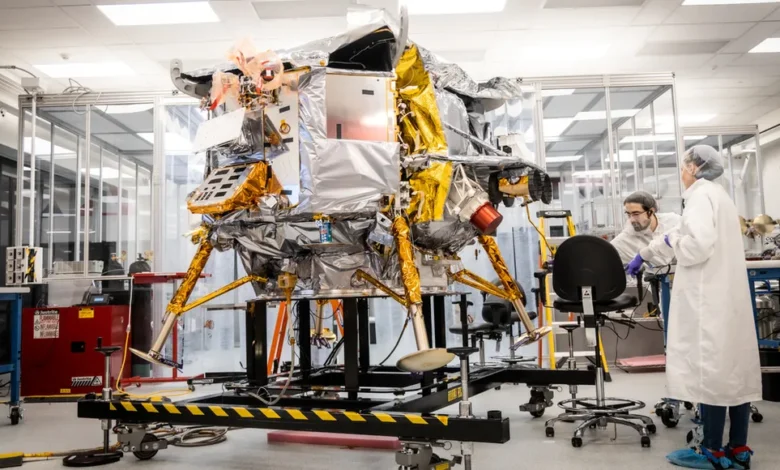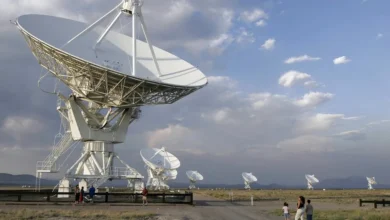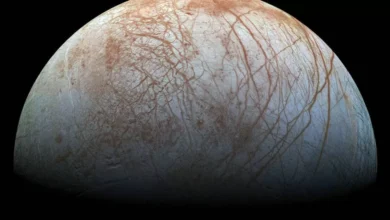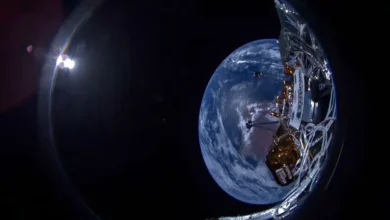Peregrine lander: Propulsion failure threatens US Moon mission

The company behind America’s latest mission to soft-land on the Moon is battling to save the project.
Pittsburgh-based Astrobotic says its Peregrine spacecraft has a faulty propulsion system that’s lost “critical” amounts of fuel.
The issue has already made it difficult for the craft to point its solar panels at the Sun to generate electricity and may now scupper the planned touch-down.
Astrobotic has begun talking about reassessing its mission goals.
In other words, it’s thinking about what can be salvaged from its original objectives.
The 1.2-tonne lander was launched early on Monday from Cape Canaveral, Florida, on a Vulcan rocket.
Its aim was to become the first American mission in half a century to make a controlled landing on the Moon and the first ever commercial endeavour to achieve the feat.
The US space agency (Nasa) had purchased capacity on the lander for five instruments to study the lunar surface environment ahead of sending astronauts there later this decade.

Peregrine’s problems emerged shortly after communications had been established with ground controllers, following its release from the top of the Vulcan.
Engineers noticed the spacecraft was struggling to maintain a stable lock on the Sun, meaning its solar cells were not receiving a constant supply of sunshine to recharge the onboard battery.
Power levels were reported to be reaching operationally low levels.
Astrobotic’s engineers eventually identified the root cause as a failure in the propulsion system, a situation apparently confirmed by a picture from the craft showing disturbed layers of insulation.
And although they were able to successfully re-point the spacecraft and charge the battery, it was evident, the company said, that Peregrine was losing propellant.
“The team is working to try and stabilise this loss, but given the situation we have prioritised maximising the science and data we can capture,” a statement read.
“We are currently assessing what alternative mission profiles may be feasible at this time.”
Astrobotic is the first of three US companies to send a lander to the Moon this year under a new private-public partnership with Nasa.
The agency is buying transport services from the Pittsburgh firm and two other commercial ventures – Intuitive Machines and Firefly. Together, the trio had planned six missions to the lunar surface in 2024.
All three US companies have Nasa as a “customer”, but the agency is “not in charge” of their projects. It is the firms themselves who have designed the spacecraft and are in command as the missions progress.
Nasa believes this arrangement will introduce more innovation and reduce costs over time. And the agency says it is prepared for some of the missions not to work.
Speaking to the BBC last month, deputy administrator Pam Melroy, said: “What we have learned from our commercial partners is if we have a high enough cadence, we can relax some of the requirements that make it so costly, and have a higher risk appetite. And if they fail, the next one is going to learn and succeed.”











